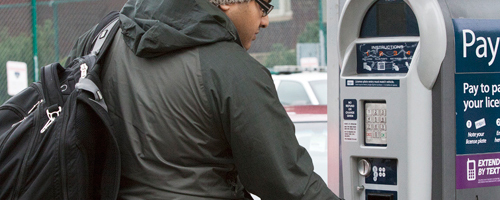Bleeding to Death
Another academic year at Portland State comes to a close. Enjoy them while they last.
Not because you’re going to graduate someday, but because Oregon’s public universities are dying. They’re dying a slow, embarrassingly preventable death.
Since 2001, state general fund money for the Oregon University System has shrunk by more than 8 percent. In that same time, the system’s student population has increased more than 16 percent.
In the 2002-03 academic year, Oregon ranked 44th in the nation in funding per full-time student, and ranked sixth highest in tuition and fees. Back then, the worst state was New Hampshire, which spent a measly $3,633 per full-time student. In 2004-05, Oregon’s per full-time student spending was $3,620.
The average salary of Portland State’s faculty members ranks within the lowest 10 percent in the nation. Part-time professors comprise 40 percent of the university’s faculty, and only 67 percent of faculty are tenure-track.
The university system also faces a nearly $600 million backlog in deferred maintenance – basic building repairs that the system can’t afford to make.
Even with the governor’s plan to increase state higher education funding by 10 percent, the university system will face a budget shortfall of over $100 million by 2009 without further funding increases, according to OUS projections this month.
Meanwhile, the burden of funding higher education has been shifting away from the state and onto the backs of students.
In 1999, students covered 41 percent of the higher education costs in Oregon, while the state covered 51 percent. The student share is now 55 percent, while the state shoulders a mere 35 percent. Tuition at Oregon’s seven public universities has increased by more than 50 percent in the last decade alone, and it is slated to increase another 3 percent this fall. Even more tuition hikes are predicted over the next several years.
Three out of four Oregon graduates finish college in debt. Those students average nearly $18,000 in loans, mostly from federal loan programs. On July 1, the interest rate on federal loans will increase nearly 2 percentage points, to 7.14 percent, costing the average borrower an additional $2,000. The federal budget reconciliation bill passed this year also set the interest rate for new loans at a fixed 6.8 percent while slashing nearly $13 billion from federal loan programs.
To make matters worse, students are forced to take out more loans as sources of grant-based aid shrivel up. In 2005, Oregon spent $133 per full-time student in financial aid. Comparatively, California spent $367. Washington spent $483. The National Center for Public Policy and Higher Education has given Oregon an “F” grade for higher education affordability. Twice.
Gov. Ted Kulongoski more than doubled funding for the Oregon Opportunity Grant, the state’s only need-based grant program, last year. But the maximum grant amount is $1,800, less than half of one year’s worth of tuition. Meanwhile, the federal Pell Grant has been stagnant at a maximum award of $4,050 since 2003, and only 22 percent of grant recipients receive the maximum amount.
Many of us attend college because we have come to accept that a bachelor’s degree is a necessity to expect any modicum of success in the modern professional world. We dream of a life where we have the opportunity to have a “career” instead of just a “job.”
Yet we are a long way off from the day when even the majority of us get to participate in that dream. Less than a third of Oregonians over the age of 25 have a college degree. Even more discouraging, only 56 percent of U.S. college students receive a degree after six years, according to a November Associated Press report.
The situation isn’t getting better, it’s getting worse. Much, much worse. Unless we do something drastic. Oregon public higher ed needs some serious CPR, and there’s only one body that can give it: the state Legislature. Next year is a legislative year, where the 2007-09 budget for the Oregon University System will be set. This will quite literally determine the future of public higher education in the state.
Conveniently, an election is coming up. This November we get to choose a governor and more than a handful of state senators and representatives. Right now, to state lawmakers’ ears, the voice of Oregon students is a mere whisper. I say let’s make it a roar, before it becomes a death rattle.



